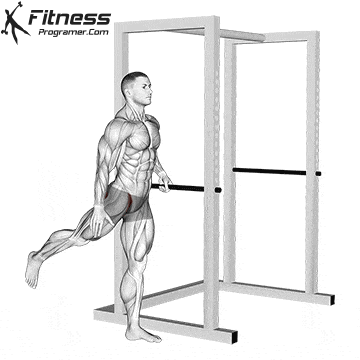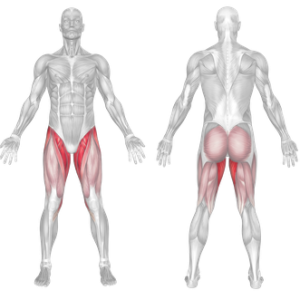Overview
Leg swings (front to back) are dynamic stretching drills that involve swinging one leg forward and backward in a controlled manner while standing on the opposite leg. Often used before athletic activity or strength training, this movement targets the hip flexors, hamstrings, and glutes, and supports better hip extension and mobility.
How to perform Leg Swings Front to Back

Stand tall next to a wall or sturdy object for balance support.
Shift your weight to one leg and lift the opposite leg slightly off the ground.
Swing the lifted leg forward, keeping the knee straight or slightly bent.
Allow the leg to swing backward, creating a smooth front-to-back arc.
Perform 10–15 swings per leg, increasing the range of motion gradually with each rep.
Switch sides and repeat with the opposite leg.
Tips for Proper Form
Keep your torso upright and core engaged throughout the movement.
Start with a small range and increase it as your body warms up.
Avoid jerky or uncontrolled swings; keep the motion fluid.
Maintain balance on the standing leg, using support only if necessary.
Breathe steadily to stay relaxed and focused on the motion.
Common Mistakes
Overarching the lower back, which can strain the spine.
Swinging too forcefully, which may lead to poor control or injury.
Turning the hips outward, reducing the effectiveness of the stretch.
Leaning too far forward or back, throwing off body alignment.
Using momentum, rather than muscle control, to move the leg.
Benefits of the Leg Swings Front to Back
Increases Hip Mobility: Loosens tight hip flexors and extensors to allow better movement mechanics.
Improves Dynamic Flexibility: Prepares the hamstrings and glutes for more intense activity with active motion.
Activates Key Lower Body Muscles: Engages the glutes, hamstrings, and hip flexors without high effort.
Enhances Athletic Performance: Supports running, jumping, and lifting by improving leg drive and stride length.
Reduces Injury Risk: Warms up the joints and muscles to reduce strain during training or sport.
Fast and Efficient: Requires no equipment and takes less than a minute per side.
Suitable for All Fitness Levels: Easily adjustable for beginners or advanced athletes depending on swing height.
How to Incorporate Into Your Routine
- For Warm-Ups: Perform 1–2 sets of 10–15 swings per leg before running, squats, or any leg-focused workout.
- For Functional Training: Include in mobility flows or movement prep before agility or plyometric drills.
- For Circuit Training: Use between high-effort sets as an active recovery to maintain hip mobility.
- For General Fitness: Add to a dynamic warm-up routine for better movement readiness.
- For Rehab or Injury Prevention: Begin with smaller swings under control to restore range of motion safely.
- For Sports Performance: Use as part of sprint or agility warm-ups to open the hips and improve stride mechanics.
Muscles Worked

Frequently Asked Questions
Should I do leg swings before or after workouts?
They’re most effective before workouts as part of a dynamic warm-up to prepare your hips and legs.
How high should I swing my leg?
High enough to feel a stretch without losing control—range can increase as you warm up.
Can I do them daily?
Yes. They are low-impact and can be done daily to improve or maintain mobility.
Is support required?
Not always, but beginners should use a wall or rail to maintain balance and proper form.
Do leg swings help with tight hips?
Yes. They help loosen up hip flexors and extensors and improve movement quality.
